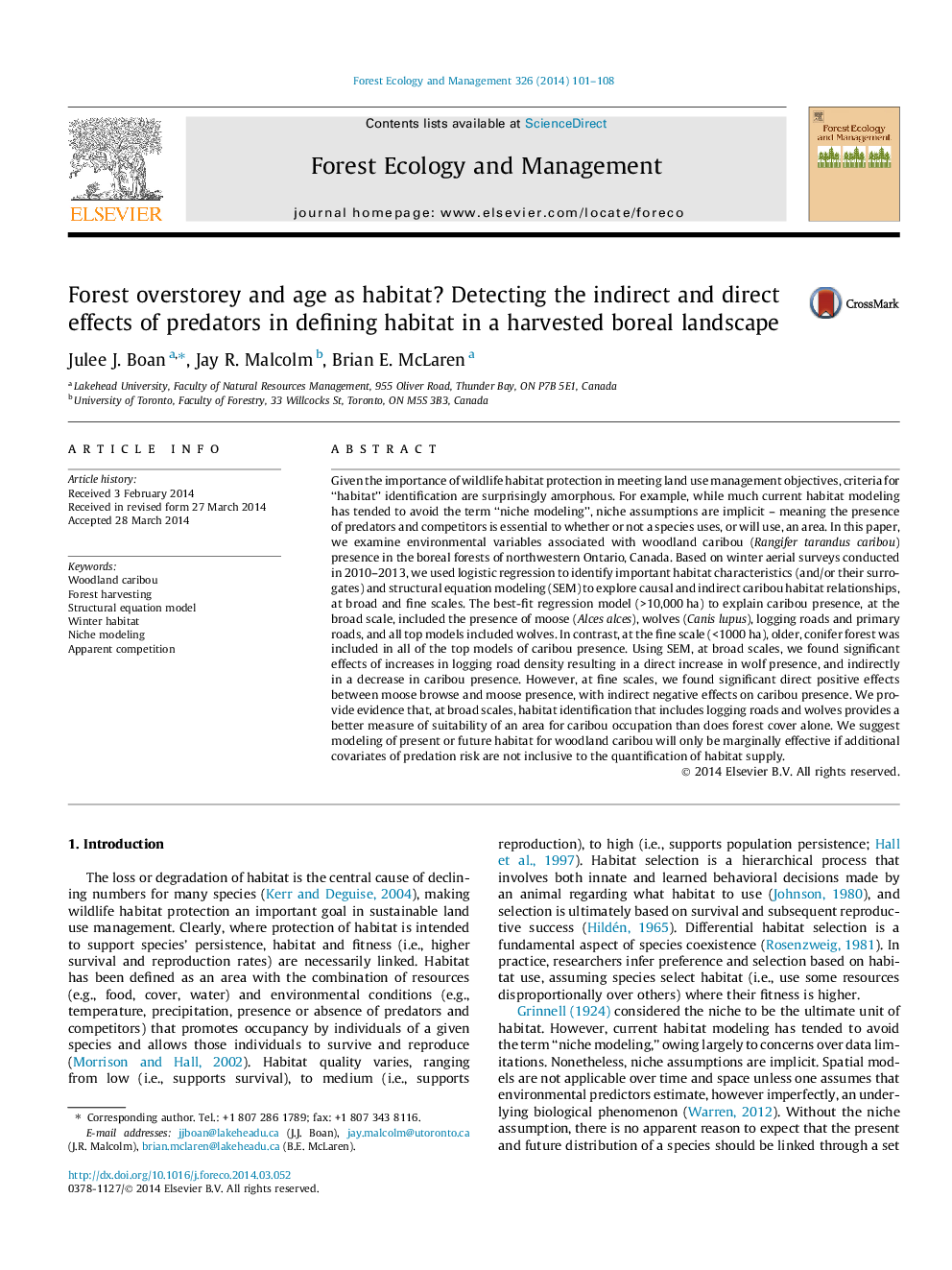| کد مقاله | کد نشریه | سال انتشار | مقاله انگلیسی | نسخه تمام متن |
|---|---|---|---|---|
| 6543532 | 159203 | 2014 | 8 صفحه PDF | دانلود رایگان |
عنوان انگلیسی مقاله ISI
Forest overstorey and age as habitat? Detecting the indirect and direct effects of predators in defining habitat in a harvested boreal landscape
ترجمه فارسی عنوان
جنگل های فرعی و سن به عنوان زیستگاه؟ تشخیص اثرات غیر مستقیم و مستقیم شکارچیان در تعریف زیستگاه در یک چشم انداز ناهموار
دانلود مقاله + سفارش ترجمه
دانلود مقاله ISI انگلیسی
رایگان برای ایرانیان
کلمات کلیدی
ویلندر کاربیو، برداشت جنگل، مدل معادلات ساختاری، زیستگاه زمستان، مدل سازی نازک، رقابت ظاهری،
موضوعات مرتبط
علوم زیستی و بیوفناوری
علوم کشاورزی و بیولوژیک
بوم شناسی، تکامل، رفتار و سامانه شناسی
چکیده انگلیسی
Given the importance of wildlife habitat protection in meeting land use management objectives, criteria for “habitat” identification are surprisingly amorphous. For example, while much current habitat modeling has tended to avoid the term “niche modeling”, niche assumptions are implicit - meaning the presence of predators and competitors is essential to whether or not a species uses, or will use, an area. In this paper, we examine environmental variables associated with woodland caribou (Rangifer tarandus caribou) presence in the boreal forests of northwestern Ontario, Canada. Based on winter aerial surveys conducted in 2010-2013, we used logistic regression to identify important habitat characteristics (and/or their surrogates) and structural equation modeling (SEM) to explore causal and indirect caribou habitat relationships, at broad and fine scales. The best-fit regression model (>10,000Â ha) to explain caribou presence, at the broad scale, included the presence of moose (Alces alces), wolves (Canis lupus), logging roads and primary roads, and all top models included wolves. In contrast, at the fine scale (<1000Â ha), older, conifer forest was included in all of the top models of caribou presence. Using SEM, at broad scales, we found significant effects of increases in logging road density resulting in a direct increase in wolf presence, and indirectly in a decrease in caribou presence. However, at fine scales, we found significant direct positive effects between moose browse and moose presence, with indirect negative effects on caribou presence. We provide evidence that, at broad scales, habitat identification that includes logging roads and wolves provides a better measure of suitability of an area for caribou occupation than does forest cover alone. We suggest modeling of present or future habitat for woodland caribou will only be marginally effective if additional covariates of predation risk are not inclusive to the quantification of habitat supply.
ناشر
Database: Elsevier - ScienceDirect (ساینس دایرکت)
Journal: Forest Ecology and Management - Volume 326, 15 August 2014, Pages 101-108
Journal: Forest Ecology and Management - Volume 326, 15 August 2014, Pages 101-108
نویسندگان
Julee J. Boan, Jay R. Malcolm, Brian E. McLaren,
